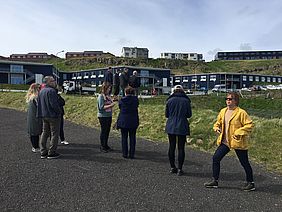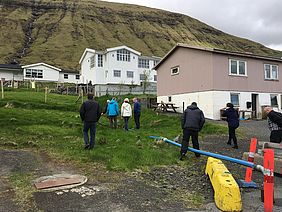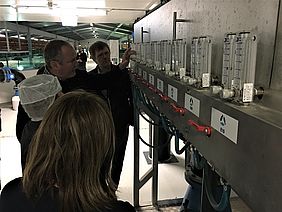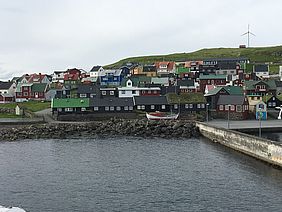Umhvørvisstovan Environment Agency, a subsidiary of the Ministry of Health and the Interior of Faroe Islands, has been one of the SECURE partners that during the last 3 years, has worked to improve energy efficiency and identify refurbishment options in local public buildings.
During the lifetime of the project, Bjarti Thomsen, Renewable energy advisor at Umhvørvisstovan and SECURE’s Faroese partner, has organised plenty of meetings with representatives from owners of public buildings, including, Municipality office and Ministry Engineering office. They have analysed energy data information and gathered successful good practices to afterwards, share them with the whole partnership. “Our focus is on (ground source) heat pumps, electric cars and renewable energy production”, explains Thomsen.
Faroese partners also discussed about the pilots that were going to implement. They investigated not only about data acquisition systems for renewable production and energy efficiency, but also about the installation of solar panels in their building. Apart from that, partners from Umhvørvisstovan have attended all the SECURE Steering Committee Meetings and held one of these in Tórshavn (Faroe Islands) in May 2018.
They also organised a workshop and some study visits to the University of the Faroe Islands to see the heat pump installations in the Faculty of Health and Medical Sciences; Boðanesheimið, a 64-apartment retirement home complex heated by water-to-air heat exchangers; Husahagi wind park and battery storage facility operated by SEV, a municipally-owned power utility; the new power plant, 10 km outside from Thórshavn, a Heavy Fuel Oil-fired application to provide environmentally responsible power supply to the Faroe Islands; a hot drill hole (27°C), where some geothermal wells are being drilled for home heating; the salmon smolt farming station Marine Harvest where they are committed to sustainability when producing and distributing salmon and the island of Nólsoy, where a small-scale community is developing some wind projects, with annual average wind speeds of >10m/s. “A considerable increase in energy efficiency was achevied by replacing the circulation pumps in 32 houses in Nólsoy village”.
According to Thomsen, the work on investigating and informing on renewable energy production, mainly wind- and solar energy, has continued during the lifetime of the project. Furthermore, solar panels have been installed on the roof of the Environment agency building.
Good energy practices
Faroese partners have disseminated some of their local good energy practices. Among them, partners got the opportunity to learn more about:
- LED lights by LedLux.
- Outdoor light retrofit.
- Ground source heat-pumps.
- Air-tightness of a building.
- Heat Exchangers by Defined Energy.
- Energy Efficiency Service by Byggitrygd.
For more information on the energy practices in the Faroe Islands, watch the following videos:








